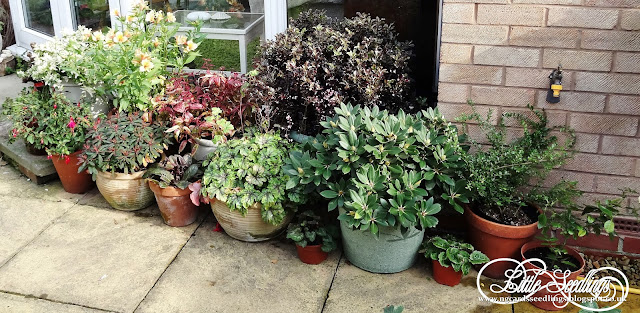Good Morning!
Well as promised here is my first post related to Problem Areas.
I decided to start this off by focusing on Plant Pests that we all encounter in our gardens.
But first ... What exactly is a Plant Pest?
A Plant Pest gains it's nutritional requirements from the host plant it feeds upon.
There are various ways which it can gain it's sustenance but broadly speaking it either eats or sucks a plant's sap.
It's a good idea to take note of a pests life cycle as they are more vulnerable at certain stages.
VINE WEEVIL
Vine Weevil attacks a large range of plants both indoors and outdoors, they are especially common in container plants.
First of all the Vine Weevil comes in two forms, the larvae and the adult beetle.
Here's what you are looking for ... due to me not having this pest personally in my garden (famous last words) I have provided photo's from the RHS website so you know what to look for due to not having any personally.
Here's what you are looking for ... due to me not having this pest personally in my garden (famous last words) I have provided photo's from the RHS website so you know what to look for due to not having any personally.
Photo's from the RHS website.
A LITTLE BIOLOGY
I won't bombard you with too much information, but here's a brief description of their life cycle.
Vine Weevil over winter outdoors or under un-heated glass as soil / compost inhabiting larvae. Female Weevils (they are all females) emerge during late May / June and begin laying eggs after they've been feeding on plant material for 21-45 days. The eggs hatch within 2 weeks and burrow themselves into the soil. Each female Weevil can lay up to 200 eggs. The Larvae will grow slowly in the soil over the Summer, maturing by Autumn at about 5/8 inch long and will pupate the following Spring.
Adult Weevils are easier to spot out of the two with them being above ground. However they will hide during the daytime at the base of plants or in mulches as they are shy in nature. Their activity mainly happens at night when they come out to feed on plant foliage. They are slow moving insects that cannot fly, but are good at crawling and climbing.
The Larvae is what causes the most damage out of the two. The Larvae buries down into the soil and eats the roots of plants during Spring and Autumn. In large numbers they can be detrimental to the plant.
SYMPTOMS
An indicator of Larvae in your soil (ground or container soil) will be the condition of the plant. When affected the plant will turn brown, wilt and die. If you lift the plant out of the pot you will notice that the roots have been eaten away.
Adult Vine Weevil chew notches into plant foliage, this can also be an indicator that larvae are present in the soil beneath.
Photo from the RHS website.
CONTROL
If like me you like to garden Organically there are a few things you can do -
* On mild Spring & Summer evening pick the Adult beetles from plant foliage at night.
Shake affected plants over some paper to dislodge and catch as many as you can.
* In Greenhouses you can check under pots and staging where the adults may be hiding during the day.
* Encourage natural predators such as birds, frogs, hedgehogs and ground beetles.
* Good drainage can be beneficial.
You can gain control over the pest biologically by using Nematodes.
This is a living bacteria which is watered onto the affected area. Ideally apply this in August / September when the soil is still warm. (5c - 20c) and before the larvae has grown large enough to cause serious damage.
This has been known to be less beneficial in dry and clay soils.
There is also Chemical control available.
I hope you have found this interesting and helpful if any of you come across this particular pest!
HAPPY GROWING!
XXX
























